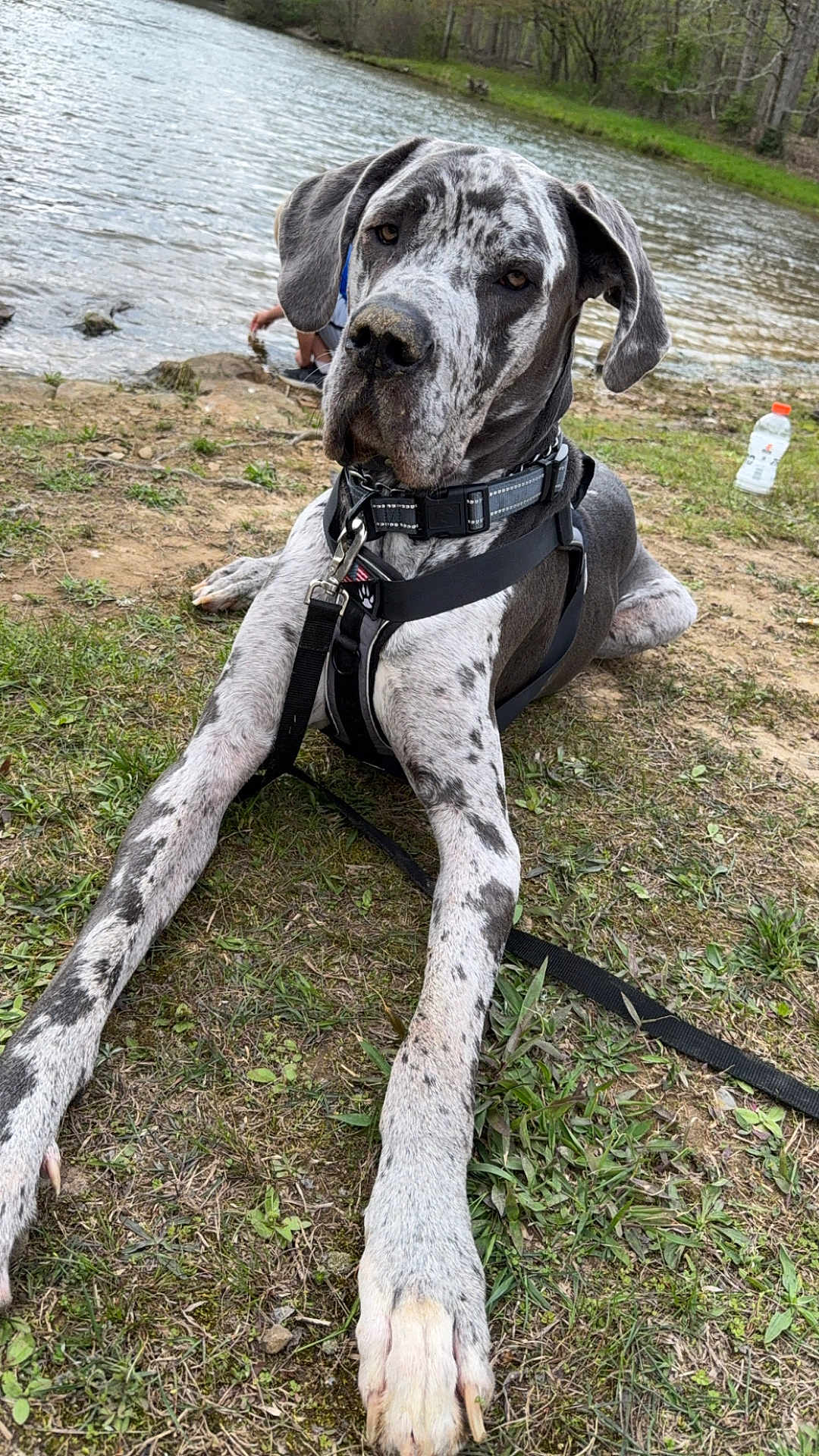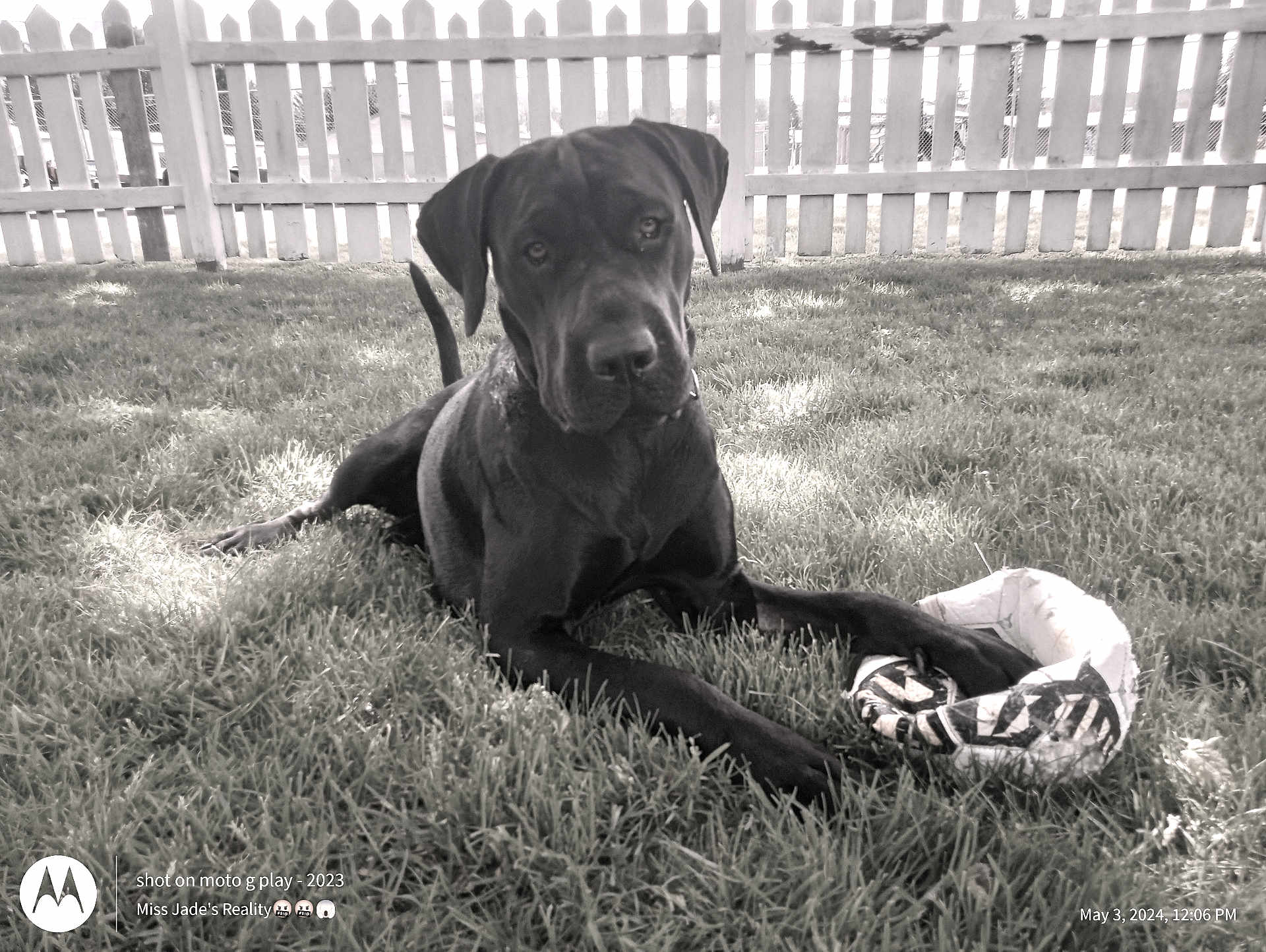
"Apollo of Dogs" - This affectionate moniker for the Great Dane reflects not just its incredible size and stature but its majestic and noble demeanor. Great Danes, often referred to as gentle giants, are beloved for their elegant appearance and amiable nature.
Personality and Behavior of the Great Dane
Great Danes are known for their remarkable temperament. Often described as gentle, friendly, and dependable, these dogs make excellent companions. Despite their grand size, they are famously affectionate and tend to be gentle with children. This compatibility with younger family members is one of the reasons they are so well-loved as family pets.
The breed is also noted for its loyalty. Great Danes form strong bonds with their human families and are known to be protective without being overly aggressive. They have a calm demeanor, which makes them well-suited for indoor living, provided they have enough space to move around comfortably.
Moreover, Great Danes exhibit an impressive degree of intelligence. They are quick learners and tend to respond well to positive reinforcement training methods. This intelligence, coupled with their desire to please, makes them both amiable pets and fantastic working dogs in various capacities, from therapy dogs to guards.
Great Danes have an endearing playful side that persists well into adulthood. Their size may be intimidating, but their kind-hearted and playful nature ensures they are approachable and warm pets. Regular exercise is essential to keep their playful energy in check and ensure they remain healthy and happy.
The Great Dane, despite its regal stature, is often considered the “world’s largest lap dog.” Owners frequently report that their Great Dane thinks it belongs on their laps, a delightful quirk that emphasizes their affectionate and sometimes amusing nature.
Meanings, History, and Origins of the name Great Dane
The name "Great Dane" is somewhat of a misnomer. The breed did not originate in Denmark, despite the implications of its name. The history of the Great Dane can be traced back to Germany, where they were initially bred for hunting purposes. The European nobility prized these dogs for their ability to hunt wild boars.
The Great Dane is a blend of Irish Wolfhound, Mastiff, and Greyhound, which contributes to its impressive size and statuesque appearance. The term "Dane" is possibly derived from the French term "Grand Danois" or "Big Danish." Despite this misleading nomenclature, their historical significance as hunting dogs remains a pivotal aspect of their heritage.
The breed’s majestic appearance has inspired many historical figures to own Great Danes. From boar-hunting dogs in the 16th century to emblematic figures of nobility, their stature and elegance have always commanded respect and admiration. The Great Dane was officially recognized as a breed by the American Kennel Club in 1887, further cementing its unique place in history.
Today's Great Danes carry an air of calm authority. Their historical purpose has shifted from hunters to companions, yet they still exhibit the inherent dignity and nobility of their ancestors. The evolution of their role from practical utility to family pets is a testament to their adaptability and enduring appeal.
Popularity of the Great Dane
The Great Dane enjoys widespread popularity across the globe, particularly in English-speaking countries. They consistently rank within the top 25 most popular dog breeds in the United States, according to the American Kennel Club. This popularity is attributed to their gentle nature, imposing yet endearing presence, and suitability as both family pets and protectors.
In the United Kingdom, the Great Dane has a dedicated following, revered for its stately appearance and amicable disposition. British families frequently choose Great Danes for their adaptability to family life and their ability to coexist peacefully with children and other pets.
Across Europe, the breed maintains a strong presence, especially in Germany, where it originated. German families appreciate the breed's historical significance and intrinsic qualities. In other parts of the world, including Australia and Canada, Great Danes' popularity continues to grow as more families discover their delightful blend of regal bearing and affectionate temperament.
Globally, Great Danes have made their mark not just in homes but also in popular culture. They have been featured in movies, TV shows, and literature, often depicted as loyal and protective companions. This cultural representation has contributed to their sustained popularity and admiration worldwide.
Health and Care of the Great Dane
Caring for a Great Dane requires some specific considerations due to their size and breed-specific health issues. One significant health concern for Great Danes is bloat (gastric dilatation-volvulus). This condition can be life-threatening and requires immediate veterinary attention. Owners should be aware of the symptoms and consider preventive measures, such as feeding smaller, more frequent meals.
Joint and bone problems, like hip dysplasia, are also common in Great Danes due to their size. Regular veterinary check-ups and providing joint supplements can help manage and prevent these issues. Ensuring that puppies grow at a steady, controlled rate is crucial to avoid early-onset joint problems.
A nutritious diet tailored to the breed's size and metabolism is essential. Great Danes have specific dietary needs, including a diet rich in protein and essential nutrients to support their large frame and muscular build. Consulting with a veterinarian to develop an appropriate diet plan is advisable.
Regular exercise is necessary to maintain a Great Dane's health and well-being, but it should be balanced to avoid overexertion, especially in younger dogs whose joints and bones are still developing. Gentle walks and playtime in a secure area are ideal forms of exercise to keep them fit and mentally stimulated.
Proper grooming is relatively straightforward. Great Danes have short coats that only require minimal maintenance, such as regular brushing to remove loose hair and occasional baths to keep their skin healthy. Attention to dental hygiene, ear cleaning, and nail trimming is also necessary to keep them in the best possible condition.
Training and Education of the Great Dane
Training a Great Dane can be a rewarding experience due to their intelligence and eagerness to please. Beginning with basic obedience training from a young age is crucial. This sets a foundation for good behavior and helps manage their size, ensuring they remain manageable as they grow.
Positive reinforcement methods work exceptionally well with Great Danes. They respond favorably to praise, treats, and affection, making these approaches effective and motivating. Consistency and patience are key to successful training, as with any dog breed.
Socialization is another critical aspect of training for Great Danes. Exposing them to a variety of people, animals, and environments from an early age helps them develop into well-adjusted adults. This is particularly important for a breed of their size, as proper socialization mitigates potential fearfulness or aggression.
Dealing with common challenges, such as leash training and excessive barking, requires a calm and firm approach. Utilizing positive reinforcement and ensuring these activities are part of a daily routine can help alleviate these issues. Enrolling in training classes can also provide a structured environment for learning and socialization.
The educational needs of a Great Dane include mental stimulation through activities and games. Puzzle toys, obedience training, and interactive play can keep their minds engaged and prevent boredom. This mental stimulation is as crucial as physical exercise for their overall well-being.
The name "Great Dane" may vary across cultures, reflecting regional influences and local languages. These variations often embody the same respect and admiration for the breed's majestic presence and gentle nature. Understanding these cultural nuances can deepen one’s appreciation for the breed's global impact and distinctive charm.
Recent trends have shown a slight shift towards unique and creative names for Great Danes, reflecting their regal appearance and individual personalities. Names inspired by mythology, historical figures, and grandeur are gaining popularity, emphasizing their dignified stature.
Famous Great Danes have appeared in various media, contributing to the breed's popularity. Characters like Scooby-Doo from the eponymous animated series have left an indelible mark on popular culture, portraying Great Danes as loyal, brave, and somewhat comical companions. This representation has endeared the breed to audiences worldwide.
Choosing the right dog involves considering various factors, including the breed's characteristics, your lifestyle, and personal preferences. Great Danes, with their gentle temperament and noble appearance, are an excellent choice for families, first-time dog owners, and those looking for a loyal and loving companion. Their size may require some adjustments, but the rewards of owning such a magnificent breed are immeasurable.
In conclusion, Great Danes epitomize the perfect blend of majesty and affection, making them a beloved choice for many dog enthusiasts. Their significant presence in KingPet contests is a testament to their appeal and the joy they bring to their owners. Embracing a Great Dane as your pet means welcoming a gentle giant into your life, one that will stand by you with unparalleled loyalty and love. Consider the Great Dane for a pet that offers both grandeur and grace in abundance.




















































































































